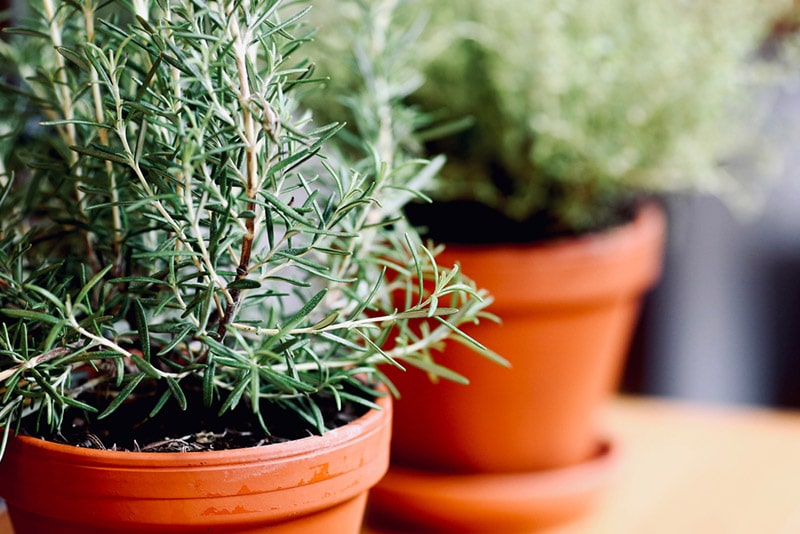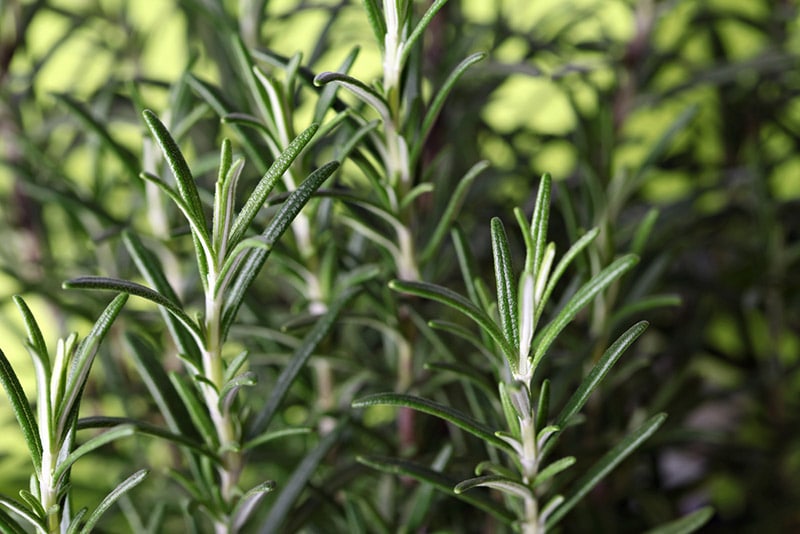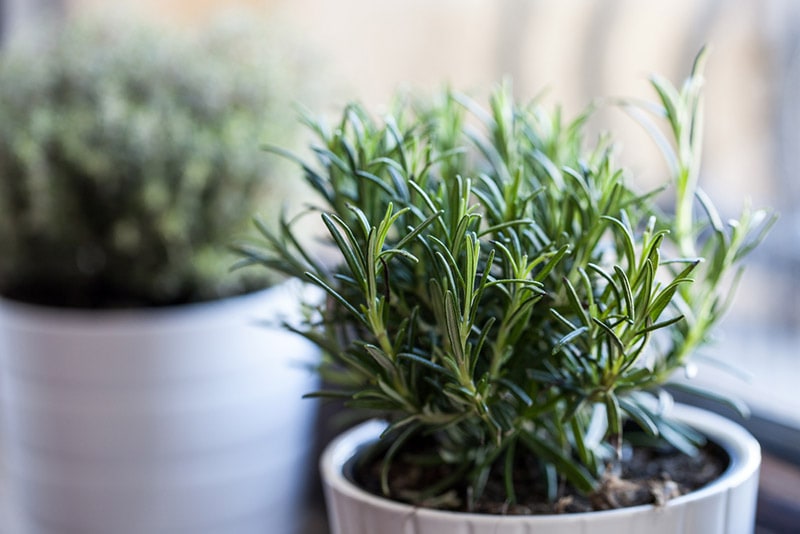Is My Rosemary Dead? (6 Signs to Look For)
-
Pete Ortiz
- Last updated:

Salvia rosmarinus is a member of the Labiatae family. The same family that houses several other culinary herbs, including oregano, mint, lavender, marjoram, and basil.
Previously known as the Rosmarinus officinalis, this species is an incredible source of vitamin B-6, calcium, and iron—minerals that play vital roles in our bodies, as they aid in the production of hemoglobin, contraction of muscles, and development of the brain.
If you’re thinking of filling up your garden space with more herbs—or have already—rosemary is an excellent choice. Of course, sometimes things don’t go quite to plan. Here are some signs that your rosemary plant is dying, or even already dead.
The 6 Signs to Tell if Your Rosemary Is Dead
1. Drooping Appearance
Even though rosemary grows just about anywhere nowadays, it is originally from the Mediterranean—a region in Europe that often experiences infrequent rainfall and extreme heat. This species has always developed a high tolerance to drought and is very sensitive to water. If you’d like them to stay healthy and produce distinctive aromatic leaves, don’t water them frequently.
Is it possible to save overwatered rosemary? Yes. That drooping appearance is a sign that the plant is still alive but stressed. Stop watering it immediately, to give its roots time to dry. Hopefully, after a day or two, you’ll start seeing positive changes. If you don’t, overwatering might not be the main issue.

2. Brownish Leaves
The Mediterranean soil is gritty, if not sandy. And compared to clay, this one is known to create a porous structure that facilitates root respiration and remarkable drainage. Slow-draining soils usually affect the plant the same way overwatering does. Not watering it for a while might save the plant, but replanting it is a far more effective solution.
By the way, potting gives you an opportunity to customize the soil conditions, thus making it easy to imitate the rosemary’s soil. Amending your garden soil is yet another solution, but the activities involved are strenuous and time-consuming.
3. Less Pronounced Aroma
Rosemary is adapted to areas that experience sunlight throughout the day. They need at least 6 hours of direct sunlight every day, as the amount received is directly proportional to the concentration of essential oils in their leaves. If you haven’t been exposing it to adequate sunlight, you’ll start to notice that its leaves aren’t as flavorful as they are supposed to be, and the aroma is less pronounced.
To remedy this problem, you’ll have to transplant them to sunnier sections of your garden. Make sure that they are 2 to 3 feet away from other plant species, especially those that might fight for the same nutrients.
Fighting for nutrients is also an issue, as it could lead to nutrient deficiency. A nutrient-deficient plant will experience stunted growth and leaf discoloration—if it doesn’t die.

4. Root Rot
The Mediterranean climate is dry, and that’s why the moisture content in the soil evaporates at a faster rate. Such conditions have been found to be harsh and non-supportive for the growth of fungal diseases that are notoriously known for causing root rot. Pathogens only thrive in humid regions, because high humidity encourages the germination of sporangia.
If root rot is the problem, pot the plants and then relocate them to a windier area. They might not grow to their full potential, but they’ll survive. The good thing about this species is that it’s a hardy plant that can survive anywhere, even if you decide to transplant it in the middle of summer.
5. Heaving
The only two rosemary varieties that we’re certain can survive cooler conditions are the Salem subspecies and the Hill’s Hardy. The rest of the family have roots that are susceptible to frost. If you’d like to protect them from the cold spells, pot them in larger containers that can hold more soil. Such that the freezing and thawing soils don’t heave the plant out.
Also, don’t leave the pots outside during winter, and remember to wrap them using a horticultural fleece.

6. Yellowish Leaves
The foliage will again turn yellow if the amount of nitrogen in the soil is excessive. Do you know what usually increases the nitrogen levels in the soil? Yes, you’re right! It’s fertilizer.
Fertilizers are important to gardeners who’d like to double or triple their yields by ensuring the soil’s nutrients are in the right balance. But while the rosemary appreciates your efforts, it’s not used to being treated like royalty.
The nitrogen will affect the plant in two ways—it will first lower the concentration of essential oils in the foliage, and then compromise its immunity. Hence, leaving it exposed to aphid infestations that could eventually cut short its life.
The yellowness will go away once you’ve stopped applying fertilizer and repotted the plant.
Frequently Asked Questions About Rosemary (FAQs)
What’s The Best Way to Propagate Rosemary?
Rosemary can be grown from seeds or through stem cuttings. We prefer working with the cuttings because they normally produce sizable plants in a short time period. You’ll still get exceptional seedlings if you plant the seeds, but they do take time to get to maturity.
The good news is that they are perennial in nature. Once you’ve successfully grown them, they come back every spring.
Can You Successfully Grow Rosemary Indoors?
Yes, it’s quite possible. However, for it to survive, it will demand 6 to 8 hours of bright light. You don’t have to take it out every morning if you don’t want to. Just invest in a good grow light and you’ll never have to worry about it receiving adequate sunlight again.
We’d recommend the LED types, as they are environmentally friendly and super-efficient. Sadly though, they usually come with a high price tag. Fluorescents are also an alternative, but they aren’t as effective as LEDs.
Is Rosemary Prone to Powdery Mildew?
Unfortunately, yes. And despite the fact that the infections are typically mild if left untreated, they can easily kill the plant. To avoid dealing with such issues, make sure that there’s sufficient airflow around your plants and adequate spacing. Also, regularly check for early signs, before it snowballs into something worse.
Getting rid of powdery mildew is not that difficult. You can use an organic fungicide or concoct a DIY solution at home. The solution will only require two ingredients—milk and water. They are to be mixed in a ratio of 1 to 5, with water taking up the larger share.
Conclusion
To recap what we’ve just discussed, the rosemary species is a popular culinary herb that’s loved by many for its toughness, medicinal properties, and natural fragrance. It’s not high maintenance at all, requires 6 to 8 hours of bright light, and thrives in areas that experience infrequent rainfall.
If you’d like to gauge how healthy the plant is, check the color of the leaves, the root condition, and its general appearance.
Featured Image Credit: Africa Studio, Shutterstock
Contents




